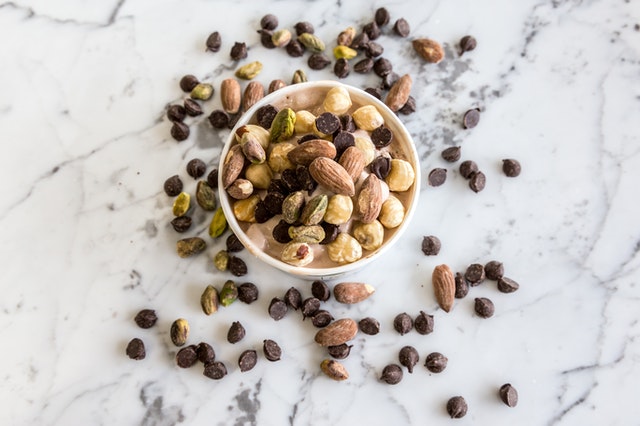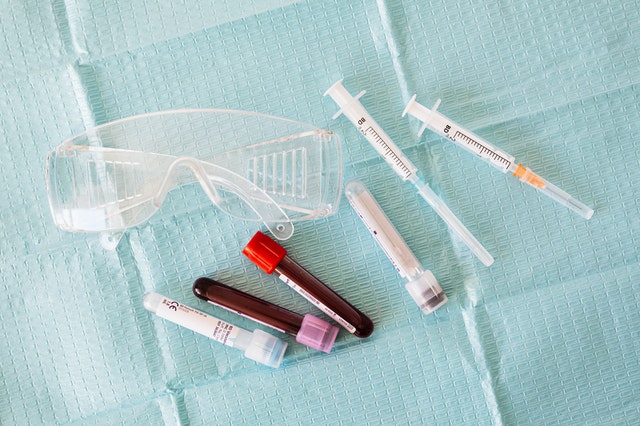It was National Diabetes Week in Australia earlier this month. This year’s campaign was focused on the mental and emotional health impact of living with diabetes. I shared an Instagram post on it and was asked the question- how can I reduce my risk of type 2 diabetes if I have a strong family history?
People from South Asian communities are up to 6 times more likely to have type 2 diabetes than the general population (compared to Europeans). This is for South Asians in their home countries and those living abroad.
Unfortunately, people from certain ethic groups have a much higher risk of diabetes. Some high risk groups include African American, Hispanic, Asian or Indian sub-continent backgrounds. The good news is you can do something about the risks – type 2 diabetes is largely preventable if you make the right sort of lifestyle modifications. The conditions that generally increase your risk of developing diabetes are being overweight, having a family history, being over 45 or older, having high blood pressure, high cholesterol and gestational diabetes. You can calculate your risk for type 2 diabetes by taking this quiz.
You may think your risks are low right now but it’s never too early to take action. Here are 5 ways you can reduce your risk:
1. Add some wholegrains
Wholegrain foods are a good source of fibre and having 2-3 serves in your diet everyday can reduce your risk of developing chronic diseases such as cardiovascular disease and diabetes by 20-30%. Some examples of wholegrain foods include brown rice, wholemeal flour, barley, buckwheat, quinoa, oats and corn. Check out Grains and Legumes Nutrition Council for recipes.

2. Add some nuts
Research has shown that a handful of nuts (30g) consumed regularly can reduce your risk of type 2 diabetes between 13% and 27%. This is due to the nuts being low GI and containing healthy (good) fats, fibre and magnesium. While people tend to associate nuts with weight gain, eating nuts regularly can reduce your chances of being overweight and reduce the risk of heart disease by about 30%. The other thing people want to know is what type of nuts are healthy are best: all nuts are good for you but it’s best to stick to unsalted varieties (raw and roasted are fine).

3. Watch your weight
Check your weight to see if you fall in the healthy weight range. Being overweight can increase your risk of developing diabetes. You can use this link to check your BMI if you know your height and weight. Please note that Asians have a lower cut off for BMI (18.5-22.9) as they have more body fat compared to Caucasians at any given BMI. If you are not within a healthy weight range, the next step would be to lose weight. This is something a dietitian can help you with.

4. Increase your movement
Regular physical activity has an important role in preventing and managing diabetes. Studies have shown that physical activity improves your blood glucose control and can prevent or delay type 2 diabetes. If you are not someone who is used to exercising regularly, the best way to start is to start small. Even a slight increase in activity will make a difference to your health and wellbeing. You can start with 5 or 10 minutes and build your way up.
The other factor to consider is your sitting period. The research on sedentary behaviour (too much sitting) is fairly new and it tells us prolonged sitting is associated with an increasing risk of type 2 diabetes. Break up your sitting periods and minimise the amount of time spent in prolonged sitting, where possible.

5. Do a regular check up
Check your blood pressure, cholesterol levels and blood glucose levels regularly. This is especially important if you have a strong family risk of type 2 diabetes. There’s a condition called pre-diabetes where blood glucose levels are higher than normal but not high enough to be diagnosed as type 2 diabetes. People with pre-diabetes don’t show any signs or symptoms on the outside so the only way to find out is by doing a blood test and checking your blood glucose levels. Pre-diabetes will progress into diabetes. The good news is that pre-diabetes is reversible if you take immediate action and make lifestyle changes (diet modifications, increasing exercise and losing weight).

References
Aune D, Keum N, Giovannucci E, et al. Whole grain consumption and risk of cardiovascular disease, cancer, and all cause and cause specific mortality: systematic review and dose-response meta-analysis of prospective studies. BMJ. 2016;353:i2716. Published 2016 Jun 14. doi:10.1136/bmj.i2716
Afshin A, Micha R, Khatibzadeh S, Mozaffarian D. Consumption of nuts and legumes and risk of incident ischemic heart disease, stroke, and diabetes: a systematic review and meta-analysis. Am J Clin Nutr. 2014;100(1):278-288. doi:10.3945/ajcn.113.076901
Jiang R, Manson JE, Stampfer MJ, Liu S, Willett WC, Hu FB. Nut and peanut butter consumption and risk of type 2 diabetes in women. JAMA. 2002;288(20):2554-2560. doi:10.1001/jama.288.20.2554
Aune D, Keum N, Giovannucci E, et al. Nut consumption and risk of cardiovascular disease, total cancer, all-cause and cause-specific mortality: a systematic review and dose-response meta-analysis of prospective studies. BMC Med. 2016;14(1):207. Published 2016 Dec 5. doi:10.1186/s12916-016-0730-3
Nikodijevic CJ, Probst YC, Batterham MJ, Tapsell LC, Neale EP. Nut consumption in a representative survey of Australians: a secondary analysis of the 2011-2012 National Nutrition and Physical Activity Survey [published online ahead of print, 2020 Mar 10]. Public Health Nutr. 2020;1-11. doi:10.1017/S1368980019004117
Colberg, S. R., Sigal, R. J., Fernhall, B., Regensteiner, J. G., Blissmer, B. J., Rubin, R. R., Chasan-Taber, L., Albright, A. L., Braun, B., American College of Sports Medicine, & American Diabetes Association (2010). Exercise and type 2 diabetes: the American College of Sports Medicine and the American Diabetes Association: joint position statement. Diabetes care, 33(12), e147–e167. doi:10.2337/dc10-9990
Dempsey PC, Owen N, Yates TE, Kingwell BA, Dunstan DW. Sitting Less and Moving More: Improved Glycaemic Control for Type 2 Diabetes Prevention and Management. Curr Diab Rep. 2016;16(11):114. doi:10.1007/s11892-016-0797-4





